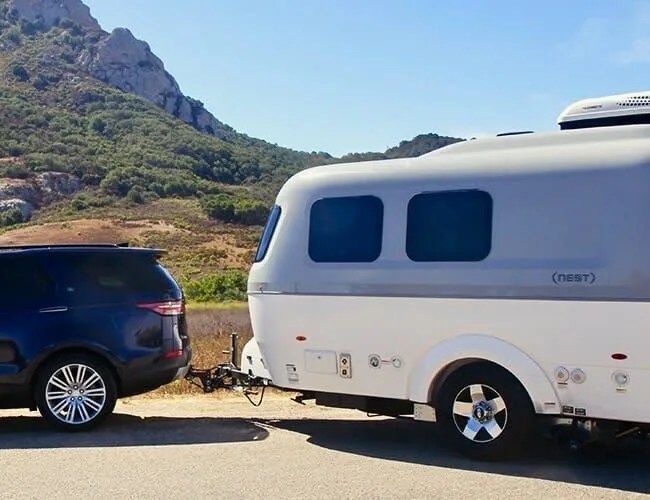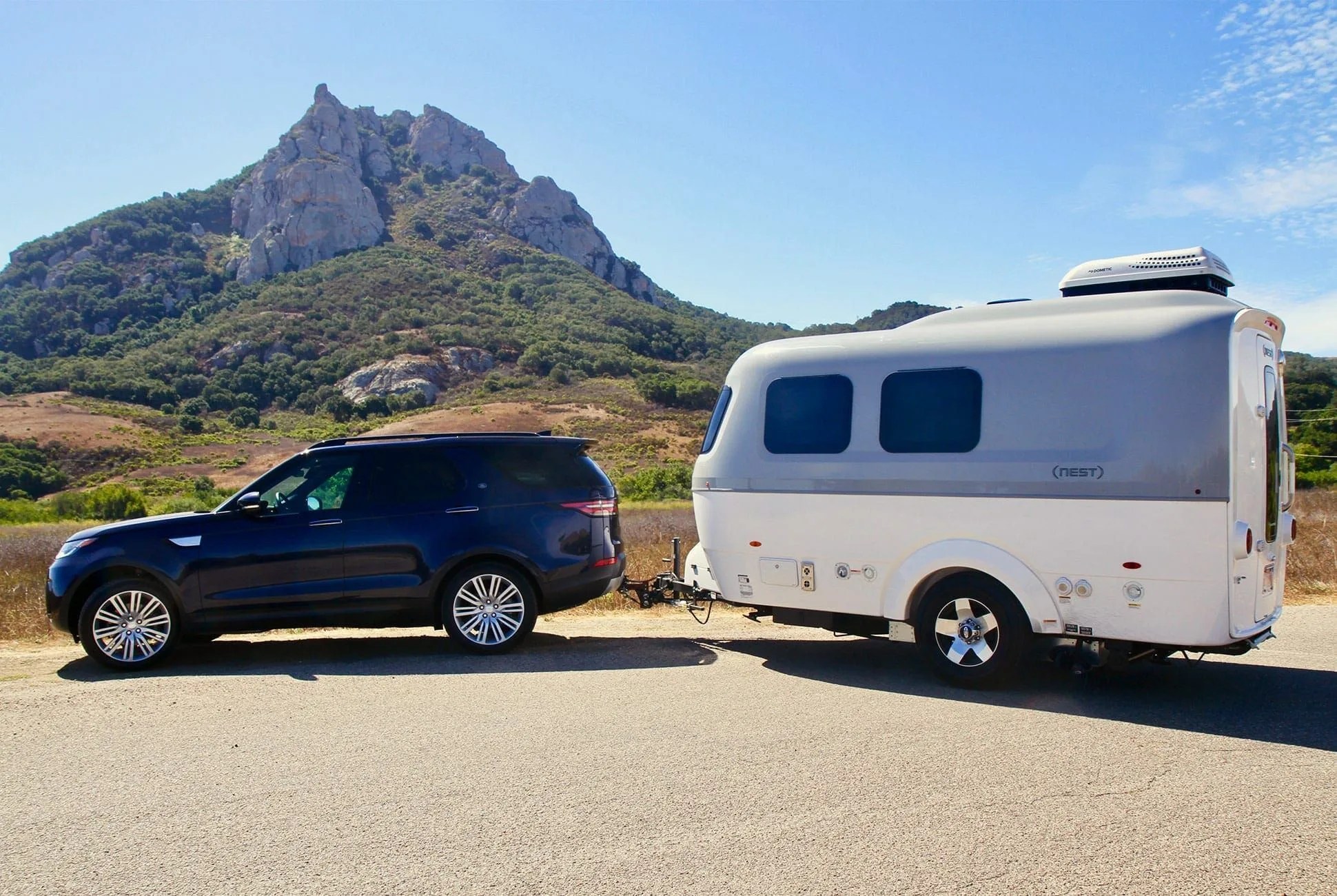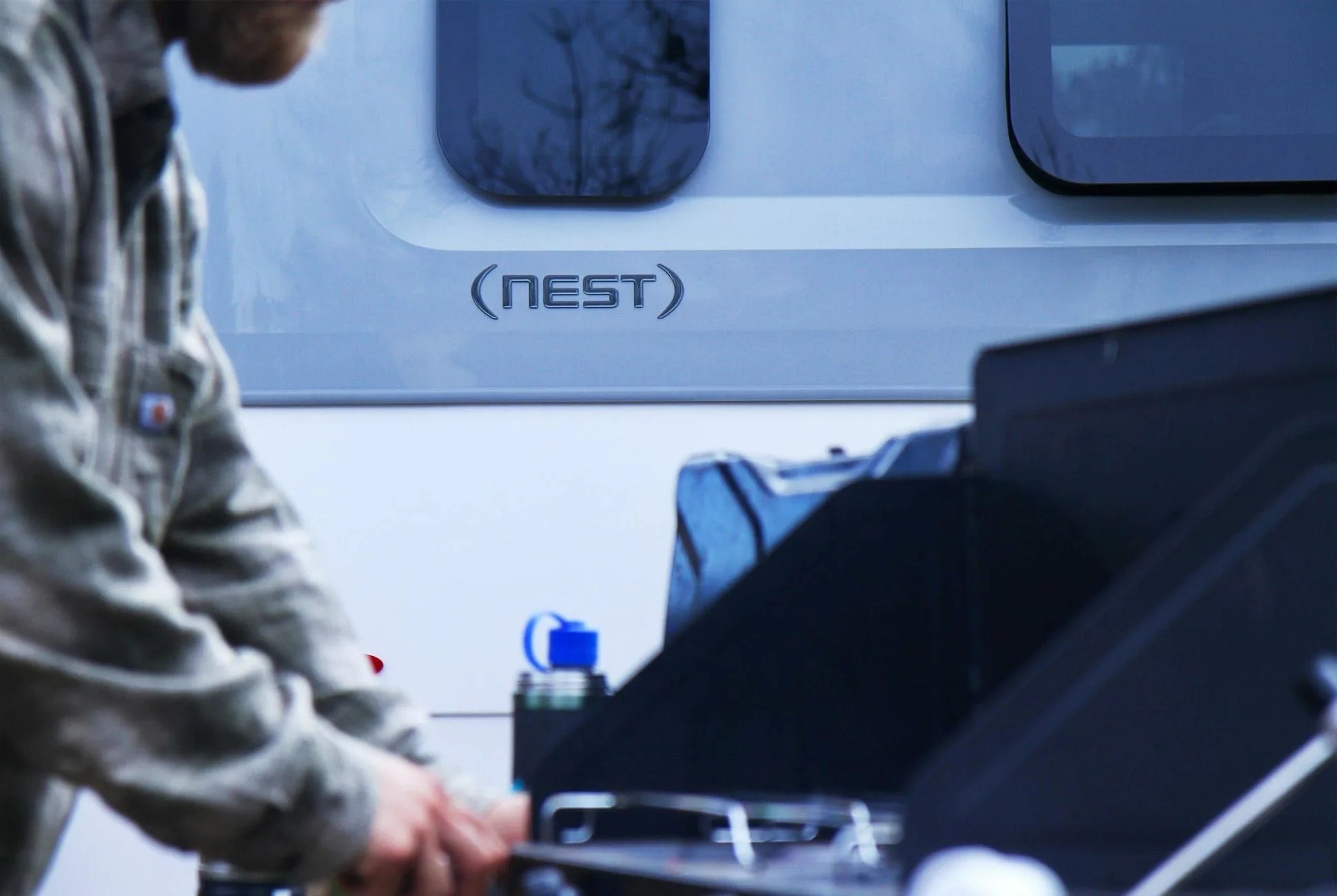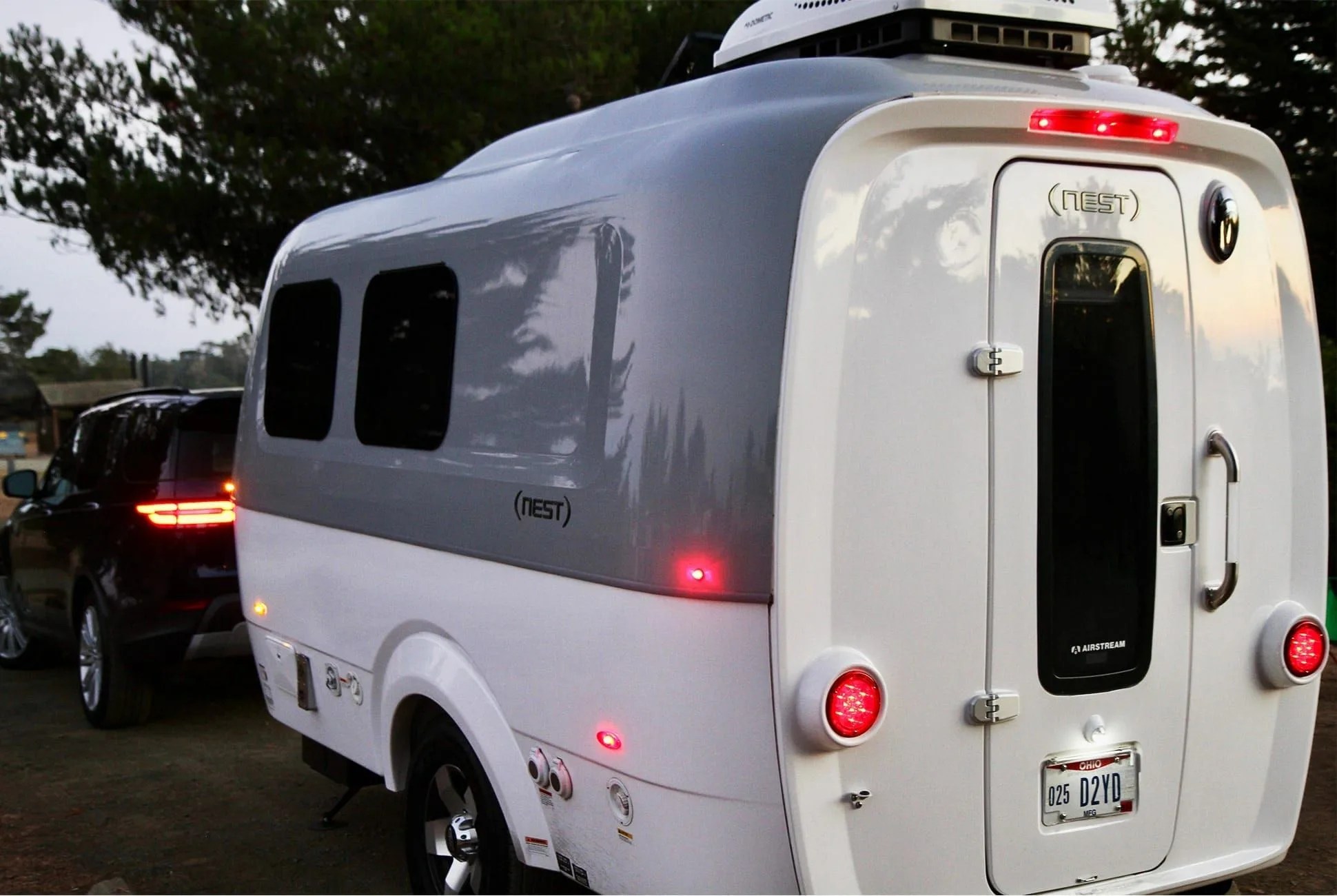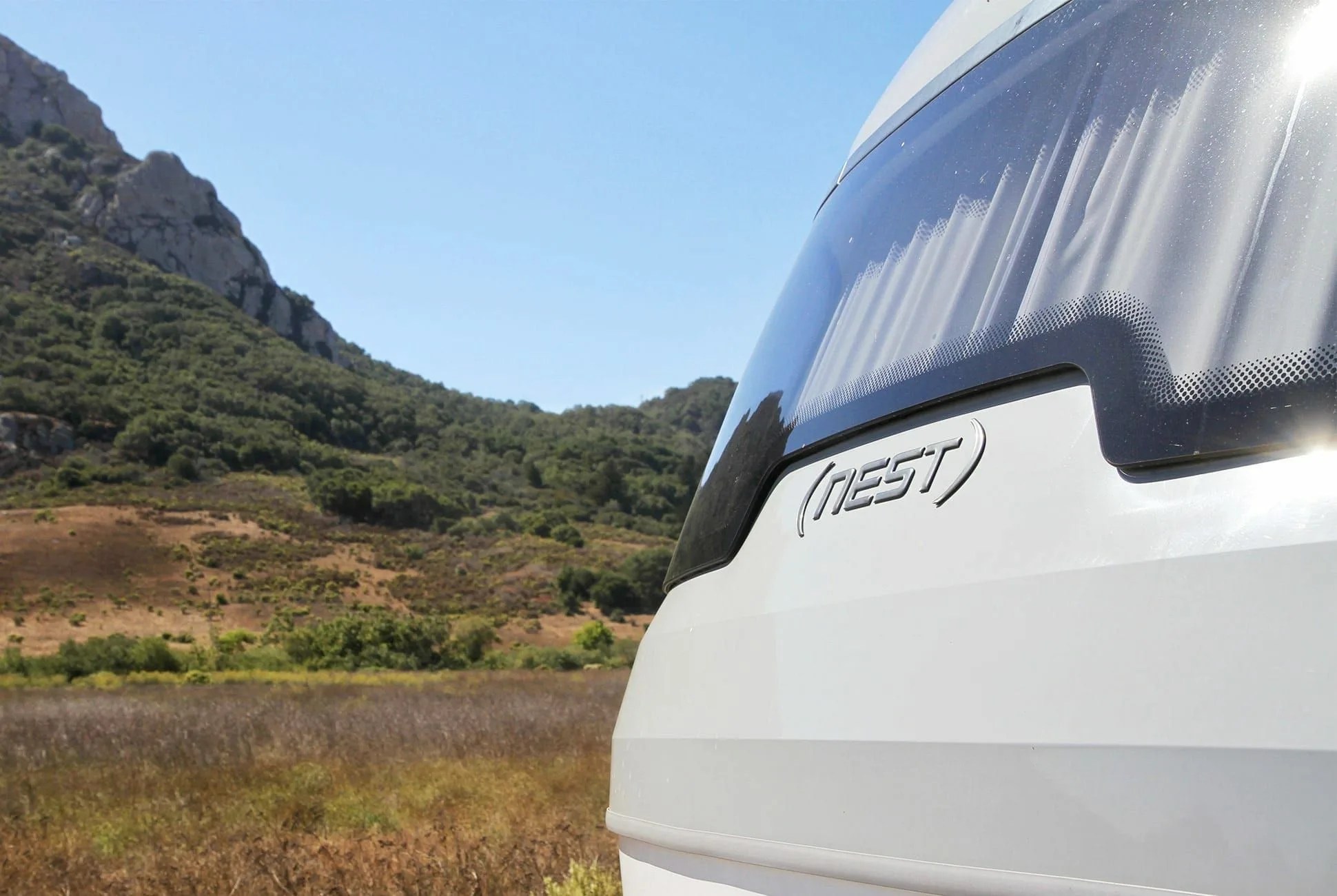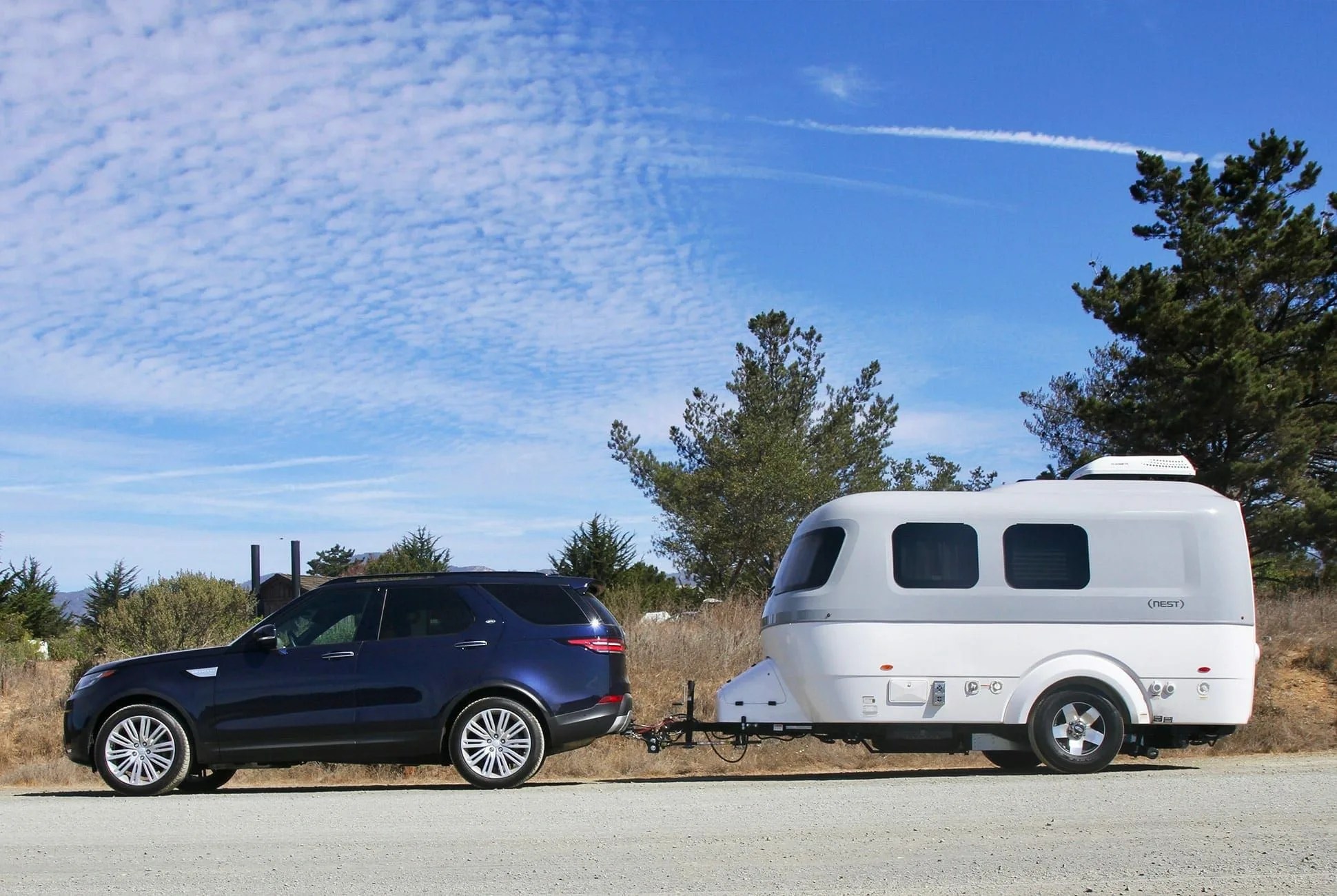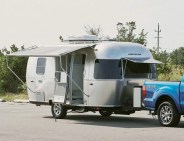6 photos
Airstream’s travel trailers are about as iconic as a product can be. Most people probably have never set foot in one, but they still know them on sight from the outside: those smooth curves, that big window in front, and most of all, that gleaming aluminum skin that simultaneously makes them look both from an idealized past and a better future.
But what if you took that shiny aluminum away? Is everything else that makes an Airstream an Airstream enough to justify the cost?
That, in effect, is the question the Nest puts forth. It’s the first Airstream ever to be made primarily from fiberglass instead of the 13th member of the periodic table. Perhaps unsurprisingly, its roots actually lie outside the company; it was created by designer Robert Johans before Airstream purchased the design and refined it into a finished product that was released in 2018. It’s still stylish, still well-made, and still packs a tremendous amount of features into a tidy footprint. But does a lack of aluminum mean the Nest lacks that Airstream soul?
Going fiberglass over aluminum doesn’t make the Nest much cheaper
With a starting price of $42,900, the Airstream Nest is the second least-expensive member of the company’s travel trailer family (only the diminutive Basecamp is cheaper) — but it’s not that much cheaper. The aluminum-sided Bambi starts at $6,700 more, and it’s just about the same size, at least in its smallest (16-foot) form.
But for an Airstream so small, the Nest’s design is a little more navigable in some small but useful ways. Putting the door at the very aft end of the cabin allows for a simple, straight-shot walkway, enabling all the cabinets and equipment to be pushed to both sides and make good use of the space. It boasts more natural light than the Bambi, thanks to its broad windows on both sides.
